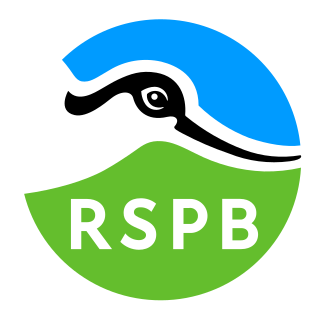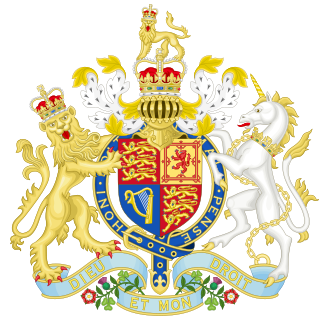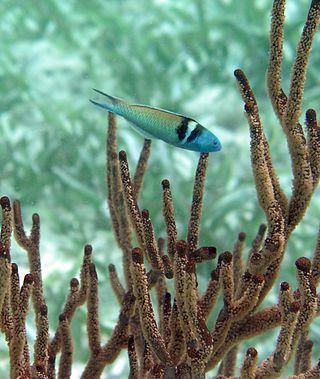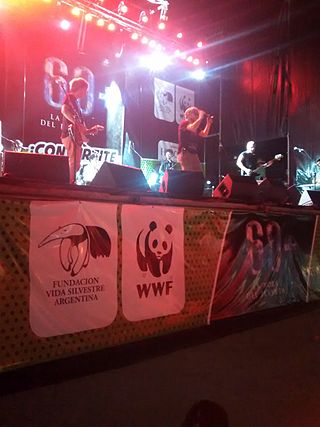
The Royal Society for the Protection of Birds (RSPB) is a charitable organisation registered in England and Wales and in Scotland. It was founded in 1889. It works to promote conservation and protection of birds and the wider environment through public awareness campaigns, petitions and through the operation of nature reserves throughout the United Kingdom.

Nature conservation is the moral philosophy and conservation movement focused on protecting species from extinction, maintaining and restoring habitats, enhancing ecosystem services, and protecting biological diversity. A range of values underlie conservation, which can be guided by biocentrism, anthropocentrism, ecocentrism, and sentientism, environmental ideologies that inform ecocultural practices and identities. There has recently been a movement towards evidence-based conservation which calls for greater use of scientific evidence to improve the effectiveness of conservation efforts. As of 2018 15% of land and 7.3% of the oceans were protected. Many environmentalists set a target of protecting 30% of land and marine territory by 2030. In 2021, 16.64% of land and 7.9% of the oceans were protected. The 2022 IPCC report on climate impacts and adaptation, underlines the need to conserve 30% to 50% of the Earth's land, freshwater and ocean areas – echoing the 30% goal of the U.N.'s Convention on Biodiversity.

The Wildlife and Countryside Act 1981 is an act of Parliament in the United Kingdom implemented to comply with European Council Directive 79/409/EEC on the conservation of wild birds. In short, the act gives protection to native species, controls the release of non-native species, enhances the protection of Sites of Special Scientific Interest and builds upon the rights of way rules in the National Parks and Access to the Countryside Act 1949. The act is split into 4 parts covering 74 sections; it also includes 17 schedules.

Gilbert White was a "parson-naturalist", a pioneering English naturalist, ecologist, and ornithologist. He is best known for his Natural History and Antiquities of Selborne.
The conservation status of a group of organisms indicates whether the group still exists and how likely the group is to become extinct in the near future. Many factors are taken into account when assessing conservation status: not simply the number of individuals remaining, but the overall increase or decrease in the population over time, breeding success rates, and known threats. Various systems of conservation status are in use at international, multi-country, national and local levels, as well as for consumer use such as sustainable seafood advisory lists and certification. The two international systems are by the International Union for Conservation of Nature (IUCN) and The Convention on International Trade in Endangered Species of Wild Fauna and Flora (CITES).
The Royal Society for The Conservation of Nature (RSCN) is an independent voluntary organization that is devoted to the conservation of the county of Jordan's natural resources; it was established in 1966 with King Hussein serving as its Honorary President.

The Wildlife Preservation Society of Queensland based in Queensland, Australia is a not-for-profit organisation which aims to engage communities to deliver conservation outcomes.
The New Jersey Audubon is an environmental education and conservation advocacy organization. Founded in 1897, it is one of New Jersey's largest environmental organizations, with several staffed nature centers, dozens of unstaffed sanctuaries, and thousands of members throughout New Jersey and beyond. New Jersey Audubon is an independent organization and is not affiliated with the National Audubon Society.

Since declaring independence in 1981, Belize has enacted many environmental protection laws aimed at the preservation of the country's natural and cultural heritage, as well as its wealth of natural resources. These acts have established a number of different types of protected areas, with each category having its own set of regulations dictating public access, resource extraction, land use and ownership.
The Canadian Wildlife Federation (CWF) is a Canadian non-profit organization dedicated to wildlife conservation.

The Frankfurt Zoological Society (FZS) is an international conservation organization founded in 1858 with headquarters in Frankfurt am Main, Germany. FZS focuses on maintaining biodiversity and conserving wildlife and ecosystems in protected areas and outstanding wild places. FZS leads and supports about 30 projects in 18 countries. Bernhard Grzimek, renowned German zoo director, zoologist, book author, editor, and animal conservationist in postwar West-Germany, served as president of the Frankfurt Zoological Society for over forty years.

Margaretta "Etta" Louisa Lemon was an English bird conservationist and a founding member of what is now the Royal Society for the Protection of Birds (RSPB).
A Plumage League to campaign against the excessive use of birds' feathers and plumage in ladies fashions was formed by Reverend Francis Orpen Morris and Lady Mount Temple in December 1885. This almost immediately amalgamated to form the Plumage Section of the Selborne Society for the Preservation of Birds, Plants and Pleasant Places in the following January.

Perivale Wood is an 11.6 hectare Local Nature Reserve (LNR) and Site of Metropolitan Importance for Nature Conservation in Perivale in the London Borough of Ealing. It is one of the oldest nature reserves in Britain. The Selborne Society has managed it since 1902, at first as a bird sanctuary. In 1914 it leased the site and in 1923 it purchased it. The wood was designated an LNR in 1974.

Fundación Vida Silvestre Argentina is a civil association founded on June 29, 1977, working to address the main environmental issues in Argentina. Its mission is to propose and implement solutions for nature conservation, promote the sustainable use of natural resources, and encourage responsible behavior in the context of climate change. The foundation achieves its goals through various actions, including the protection of natural areas, advocating for environmental legislation, promoting awareness and education, and encouraging responsible consumption and production.

The Swedish Society for Nature Conservation is a non-profit, non-partisan, Swedish environmental organization. It is the largest and oldest environmental society in Sweden, with 24 county branches and 270 municipality subdivisions. In 2019, it had 230,000 members.

Environment and Ecology Bureau is a policy bureau of the Government of Hong Kong. The agency was established on 1 July 2022. The current Secretary for Environment and Ecology is Tse Chin-wan.












